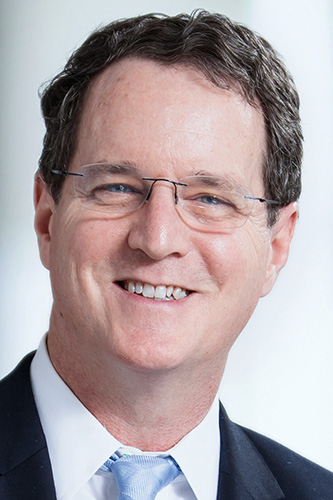

 There was a major attack launched against long-haul fiber networks outside of Paris, France, on April 27 of this year. It appears that there was a coordinated attack by vandals to cut three long-haul fiber routes simultaneously. Fibers were cut with what seemed like a circular saw, and sections of fiber were removed to make it hard to make repairs. These were backbone fibers that were shared by multiple ISPs. more
There was a major attack launched against long-haul fiber networks outside of Paris, France, on April 27 of this year. It appears that there was a coordinated attack by vandals to cut three long-haul fiber routes simultaneously. Fibers were cut with what seemed like a circular saw, and sections of fiber were removed to make it hard to make repairs. These were backbone fibers that were shared by multiple ISPs. more
 Starlink is available in 37 nations, and the price for best effort service was the same everywhere until August 3, when variable pricing with throttling became available in France. I predicted they would eventually shift from uniform to affordable pricing some time ago, but why did they do it now? Starlink first became available in the U.S. and Canada, and sales are beginning to outrun the available capacity. more
Starlink is available in 37 nations, and the price for best effort service was the same everywhere until August 3, when variable pricing with throttling became available in France. I predicted they would eventually shift from uniform to affordable pricing some time ago, but why did they do it now? Starlink first became available in the U.S. and Canada, and sales are beginning to outrun the available capacity. more
I'm writing this from Taipei, where I have lived in peace for over 10 years. Sadly I learned that during this week, intermediate-range ballistic missiles (operated by China) have flown far above the capital of Taiwan and that five of them have landed in the waters of Japan's exclusive economic zone (EEZ). This provocative live-firing drill came as a direct response from China following Pelosi's visit. more
 Recently, an article I wrote for Bitcoin Magazine talked about how we can use DNS underscore scoping to better abstract Lightning addresses and even create a de facto specification that could work on any resource (like a wallet or a smart contract) across all blockchains. more
Recently, an article I wrote for Bitcoin Magazine talked about how we can use DNS underscore scoping to better abstract Lightning addresses and even create a de facto specification that could work on any resource (like a wallet or a smart contract) across all blockchains. more
 Let's take a second to look back some 50 years to the world of 1972 and the technology and telecommunications environment at that time. The world of 1972 was one populated by a relatively small collection of massive (and eye-wateringly expensive) mainframe computers that were tended by a set of computer operators working around the clock and directed by specialized programmers, trained in the obscure symbol set used by the job control systems on these computers. more
Let's take a second to look back some 50 years to the world of 1972 and the technology and telecommunications environment at that time. The world of 1972 was one populated by a relatively small collection of massive (and eye-wateringly expensive) mainframe computers that were tended by a set of computer operators working around the clock and directed by specialized programmers, trained in the obscure symbol set used by the job control systems on these computers. more
 Casey Lide and Thomas B. Magee of Keller & Heckman highlight an issue that anybody building fiber on utility poles should be aware of. A recent article on their website notes that in some cases, an easement obtained for using private land to bring electric service might not automatically allow an easement for bringing fiber. more
Casey Lide and Thomas B. Magee of Keller & Heckman highlight an issue that anybody building fiber on utility poles should be aware of. A recent article on their website notes that in some cases, an easement obtained for using private land to bring electric service might not automatically allow an easement for bringing fiber. more
 On June 5th Elon Musk said SpaceX had nearly 500,000 customers in 32 nations and 9 languages. By now, there must be 500,000 customers, most of whom are in the U. S. and Canada, and their performance is suffering. In the first quarter of this year, OOKLA reported that the median Starlink download speed fell from 104.97 to 99.55 Mbps in the U.S. and from 106.64 to 97.4 Mbps in Canada. more
On June 5th Elon Musk said SpaceX had nearly 500,000 customers in 32 nations and 9 languages. By now, there must be 500,000 customers, most of whom are in the U. S. and Canada, and their performance is suffering. In the first quarter of this year, OOKLA reported that the median Starlink download speed fell from 104.97 to 99.55 Mbps in the U.S. and from 106.64 to 97.4 Mbps in Canada. more
 All devices that connect to the internet need unique addresses. The number of IP addresses is limited, creating a demand for addresses worldwide, particularly from the cloud computing industry. This demand has raised the value of IPv4 to levels that the internet's original developers didn't predict, in part because the internet was considered an experiment at the time. Of course, use - and so demand -- has exceeded anyone's realistic expectations. more
All devices that connect to the internet need unique addresses. The number of IP addresses is limited, creating a demand for addresses worldwide, particularly from the cloud computing industry. This demand has raised the value of IPv4 to levels that the internet's original developers didn't predict, in part because the internet was considered an experiment at the time. Of course, use - and so demand -- has exceeded anyone's realistic expectations. more
 In the early days of Online Brand Protection (OBP), before it was commonly understood how damaging to revenue infringements could be, this was an extremely popular topic. I remember delivering webinars on the subject then and even running a couple of half-day in-person workshops for brand owners at major conferences. more
In the early days of Online Brand Protection (OBP), before it was commonly understood how damaging to revenue infringements could be, this was an extremely popular topic. I remember delivering webinars on the subject then and even running a couple of half-day in-person workshops for brand owners at major conferences. more
 There is an interesting new trend in fiber construction. Some relatively large cities are getting fiber networks using microtrenching. Just in the last week, I've seen announcements of plans to use microtrenching in cities like Mesa, Arizona, and Sarasota Springs, New York. In the past, the technology was used for new fiber networks in Austin, Texas, San Antonia, Texas, and Charlotte, North Carolina. more
There is an interesting new trend in fiber construction. Some relatively large cities are getting fiber networks using microtrenching. Just in the last week, I've seen announcements of plans to use microtrenching in cities like Mesa, Arizona, and Sarasota Springs, New York. In the past, the technology was used for new fiber networks in Austin, Texas, San Antonia, Texas, and Charlotte, North Carolina. more
 Over the last two years, we've all faced supply shortages on items we previously never thought could be in short supply. Most recently, the baby formula and semiconductor markets were hit. Before that, supply chain attacks on Colonial Pipeline and JBS Foods showed us that an attack on one company through a singular point of compromise has the potential to disrupt an entire network of connected companies, products, partners, vendors, and customers. more
Over the last two years, we've all faced supply shortages on items we previously never thought could be in short supply. Most recently, the baby formula and semiconductor markets were hit. Before that, supply chain attacks on Colonial Pipeline and JBS Foods showed us that an attack on one company through a singular point of compromise has the potential to disrupt an entire network of connected companies, products, partners, vendors, and customers. more
 FCC Chairman Jessica Rosenworcel has circulated a draft Notice of Inquiry inside the FCC to kick off the required annual report to Congress on the state of U.S. broadband. As part of preparing that report, she is recommending that the FCC adopt a new definition of broadband of 100/20 Mbps and establish gigabit broadband as a longer-term goal. I have a lot of different reactions to the idea. more
FCC Chairman Jessica Rosenworcel has circulated a draft Notice of Inquiry inside the FCC to kick off the required annual report to Congress on the state of U.S. broadband. As part of preparing that report, she is recommending that the FCC adopt a new definition of broadband of 100/20 Mbps and establish gigabit broadband as a longer-term goal. I have a lot of different reactions to the idea. more
 A network can fence its own IP addresses or block specific external ones from access. Administrators frequently block access to their own IP addresses to bar unwanted access to content. Individual IPs or blocks of IPs may also be blocked due to unwanted or malicious behavior. IP address blocking prevents a specific IP address or group of IP addresses from connecting with a server, computer, or application. more
A network can fence its own IP addresses or block specific external ones from access. Administrators frequently block access to their own IP addresses to bar unwanted access to content. Individual IPs or blocks of IPs may also be blocked due to unwanted or malicious behavior. IP address blocking prevents a specific IP address or group of IP addresses from connecting with a server, computer, or application. more
 The Internet hints at the much larger possibilities of open connectivity in enabling discoveries such as the web but for the physical world. The ideas themselves go to a deeper level of thinking about how we build systems and how we can enable the future. This post is aimed at people building systems and devices which can be interconnected to create systems and meta-devices. more
The Internet hints at the much larger possibilities of open connectivity in enabling discoveries such as the web but for the physical world. The ideas themselves go to a deeper level of thinking about how we build systems and how we can enable the future. This post is aimed at people building systems and devices which can be interconnected to create systems and meta-devices. more
 I often read marketing material from Online Brand or Content Protection vendors, especially some of the newer ones, that make IP rights enforcement sound very straightforward. In some scenarios, given the correct processes are followed, this can be the case - using eBay's VERO program or similar offerings from the major legitimate platforms, counterfeit listings can be removed very quickly. more
I often read marketing material from Online Brand or Content Protection vendors, especially some of the newer ones, that make IP rights enforcement sound very straightforward. In some scenarios, given the correct processes are followed, this can be the case - using eBay's VERO program or similar offerings from the major legitimate platforms, counterfeit listings can be removed very quickly. more
Sponsored byVerisign

Sponsored byWhoisXML API

Sponsored byVerisign

Sponsored byRadix

Sponsored byDNIB.com

Sponsored byCSC

Sponsored byIPv4.Global
